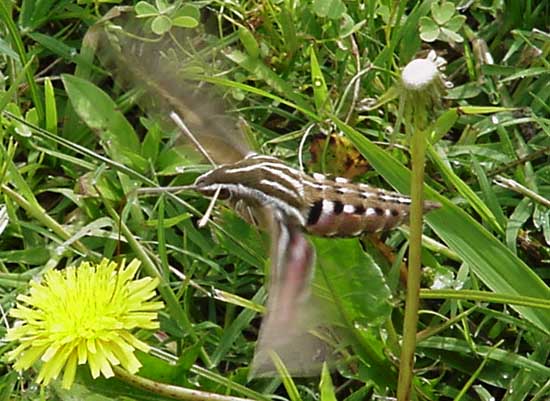Gila County, Arizona
Sphingidae

|
|
Updated as per personal communication with Evan Rand, August 8, 2007 Updated as per James P. Tuttle's The Hawk Moths of North America, July 25, 2009 Updated as per personal communication with Lauren Paterson, July 25, 2009 Updated as per personal communication with Evan Rand (Sphinx libocedrus August 15, 2007, Payson, Gila Co. - 1 male); May 9, 2010 |

This page is inspired by and dedicated to
Evan Rand of Phoenix, Arizona
(Maricopa County).
Evan writes, "I do frequent light-trapping in the summer.
I do set up traps frequently in neighboring Gila County and in
Maricopa County.
I have personally collected two Eumorpha typhon
specimens (both perfect) in Gila County."
Evan sent the following summary for Gila and nearby counties:
"Paonias myops - Edge of Maricopa Co./Gila Co. 8/05 (rare only seen 1)
Pachysphinx occidentalis - Uncommon Both Maricopa Co. and Gila Co. From April to August
Eumorpha achemon - Maricopa Co. (rare only 1 in April)
Eumorpha typhon - Gila Co. (rare only 2, late July, early August)
Manduca sexta - Uncommon in Maricopa Co. (Mostly seen in late
September, early October) Uncommon in Gila Co.
(Late July/August), Common in Santa Cruz Co. (Late July/August)
Manduca rustica - Rare in Maricopa Co. (late September), uncommon in Santa Cruz Co.
Manduca muscosa - uncommon in Santa Cruz Co. (late July)
Agrius cingulata- Rare in Maricopa Co. (late September)
Smerinthus cerisyi - Uncommon in Maricopa and Gila Co. (late July/early August)
Sphinx dollii - Common in Gila Co. (late July/early August)
Sphinx chersis - Uncommon in Gila Co. (late July/early August)
Xylophanes falco - Uncommon in Santa Cruz Co. (late July/early August)
Hyles lineata - Very common Maricopa, Yavapai, Gila, Pima, Santa Cruz Cos. (March to October).
This species is extremely common almost everywhere, I've seen
hundreds of individuals at a single light before, and thousands
of larva crawling across the desert. It's hard to light trap
anywhere between March and October and not get at least one
H. lineata."
Fifty-three Sphingidae species are listed for Arizona on the U.S.G.S. website. Not all of the species are reported or anticipated in Gila County (sixteen are reported on U.S.G.S.). It is hoped that this checklist, with the thumbnails and notes, will help you quickly identify the moths you are likely to encounter.
A "WO" after the species name indicates that I (William Oehlke) expect that this moth is present or might be present, although unreported. A "USGS" indicates the moth is confirmed on USGS site.
Please help me develop this list with improved, documented accuracy by sending sightings (species, date, location), preferably with an electronic image, via email to Bill Oehlke.
Sphinginae subfamily
Smerinthini Tribe:
Macroglossinae subfamilyDilophonotini tribe:
Philampelini tribe:
Macroglossini tribe:
|
On August 8, 2007, Evan writes, "I just started with central Arizona where Hyles lineata is having an excellent year. There are about 10 times more than average. I've also gotten Manduca sexta, Sphinx dollii, Pachysphinx occidentalis, and Smerinthus ceryisi (which is pretty typical) to come to lights. Also, there have been a few Sphingicampa hubbardi. However the find so far has been a Gila county record Manduca florestan (perfect specimen as well)."
Enjoy some of nature's wonderments, giant silk moth cocoons. These cocoons are for sale winter and fall. Beautiful Saturniidae moths will emerge the following spring and summer.
Read Actias luna rearing article. Additional online help available.
Eggs of many North American species are offered during the spring and summer. Occasionally summer Actias luna and summer Antheraea polyphemus cocoons are available. Shipping to US destinations is done from with in the US.
Use your browser "Back" button to return to the previous page.
This page is brought to you by Bill Oehlke and the WLSS. Pages are on space rented from Bizland. If you would like to become a "Patron of the Sphingidae Site", contact Bill.
Please send sightings/images to Bill. I will do my best to respond to requests for identification help.
 Show appreciation for this site by clicking on flashing butterfly to the left. The link will take you to a page with links to many insect sites. |